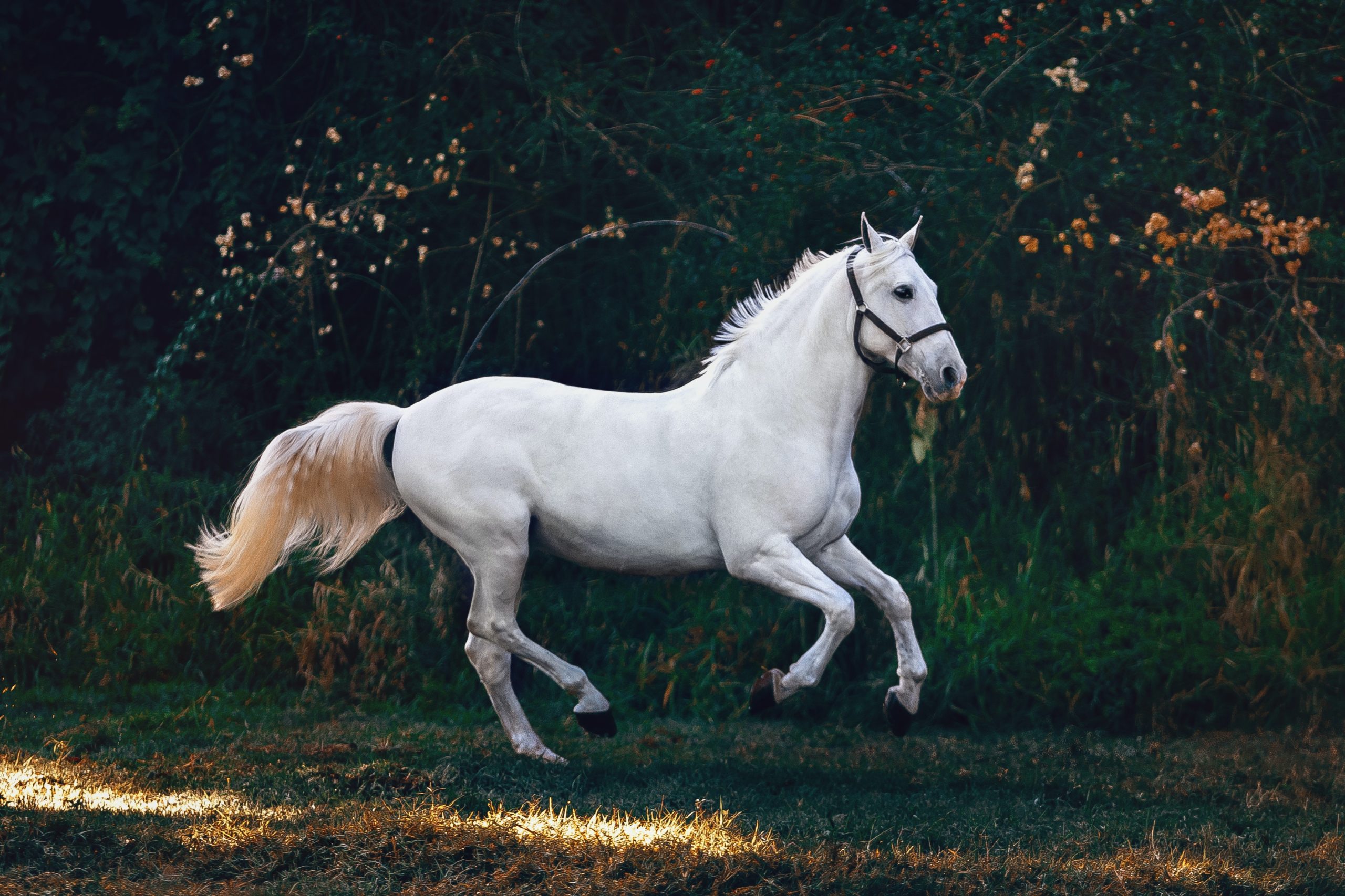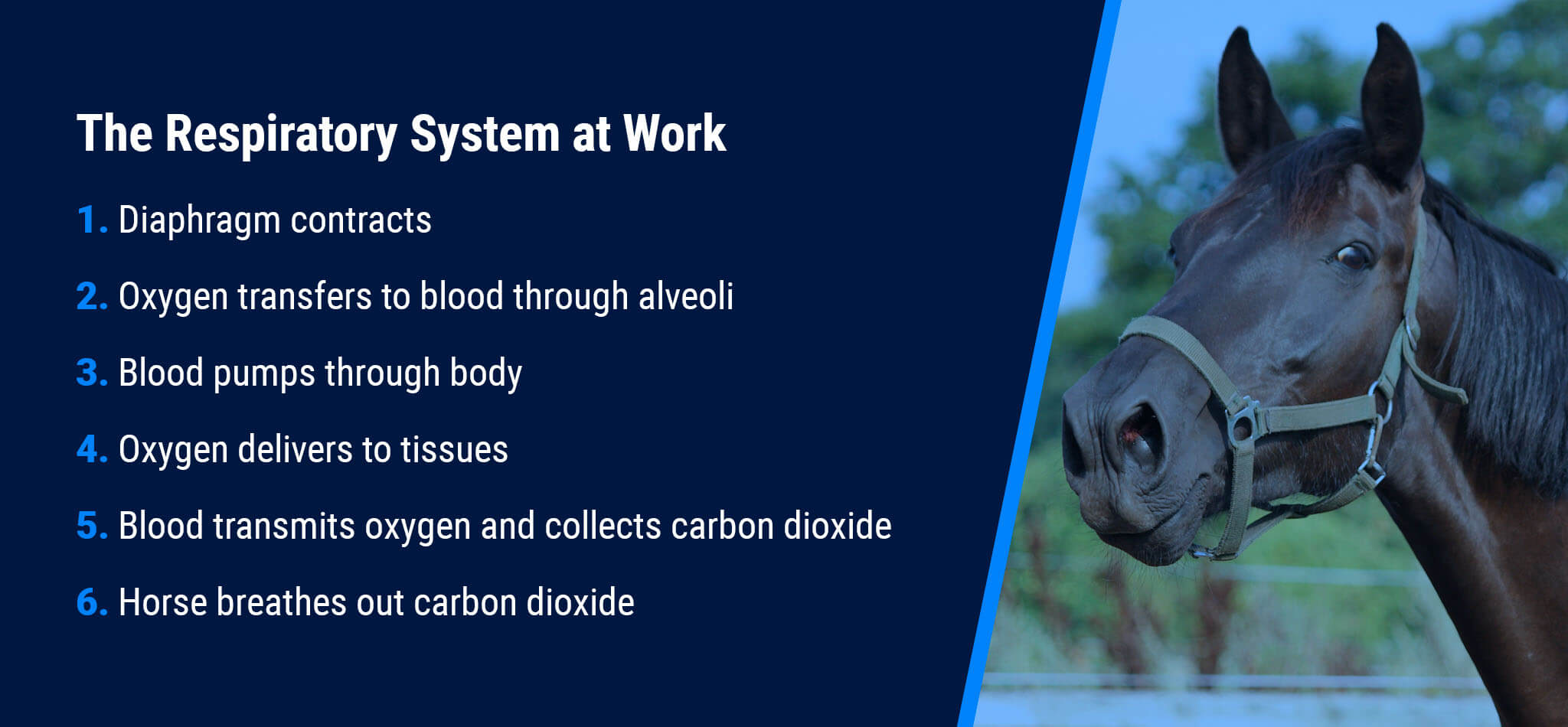Respiratory Health in Horses

Horses are incredible runners with an impressive air capacity. When running at maximum exertion, horses consume 40 times more oxygen than they do at rest. This is because an equine respiratory system is highly specialized for exercise. Your horse’s respiratory system is a powerful engine for movement. Promoting equine respiratory health is vital for overall well-being. To understand this topic, let’s take a look at the different organs and systems your horse uses to breathe.
Table of Contents
- The Equine Respiratory System
- The Respiratory System At Work
- Best Practices for Equine Respiratory Health
The Equine Respiratory System
Your horse’s respiratory system is like a finely tuned machine. It can be divided into two sections with separate functions: the upper and lower respiratory tract.
Upper Respiratory Tract
The upper respiratory tract begins with the horse’s nostrils. Both nostrils are covered with folds that help with expansion during breathing and filter debris. Within the nostrils, a horse has coils of bone called turbinates. These structures help to warm and humidify the air your horse breathes and filter out any remaining debris.
Horses have a hard palate at the bottom of the nasal passage, which transitions to a soft palate further back. Each palate helps to separate the horse’s mouth from its nose area. The epiglottis sits on top of the soft palate and covers the airway when a horse swallows food.
The pharynx and larynx are the last areas situated within the upper respiratory tract. In addition to contributing to breathing functions, the pharynx and larynx house the vocal cords.
Lower Respiratory Tract
Just beyond the larynx, the lower respiratory begins with the trachea. The trachea is a windpipe that transports air from the nasal passage to the lungs. Small, hairlike structures known as cilia line the trachea and help filter out debris and fluid. When the trachea reaches the lungs, it splits into two sections.
The bronchi attach to each lung and branch out into bronchioles in a root-like pattern. At the end of each bronchiole, there are small clusters of sacks known as alveoli. These structures serve as a meeting point where oxygen can enter the blood, and blood can deposit carbon dioxide.
The Respiratory System At Work

The respiratory system operates in a rapid and repetitive cycle that begins when a horse inhales:
- As a horse breathes, the diaphragm contracts to pull oxygen into the lower respiratory tract.
- The oxygen is then transferred to the blood through the alveoli, and it makes its way to the horse’s heart.
- There, the blood is pumped through the body to deliver oxygen to the tissues.
- As the blood transmits oxygen, it collects carbon dioxide and returns it to the alveoli.
- The horse breathes out the carbon dioxide, and the process begins again.
During intense exercise, a horse may take more than two breaths per second. A horse’s airflow velocity during exercise is approximately 64 to 79 liters per second — compared to a human’s four liters per second. Accordingly, the respiratory cycle in a healthy horse occurs in quick succession.
Best Practices for Equine Respiratory Health
A horse’s respiratory system supports its high demand for oxygen. In general, the air your horse breathes promotes respiratory health. High-quality, dust-free air allows the upper and lower respiratory tracts to function at full capacity.
Many horses live and work in somewhat dusty areas. Consider these best practices to help your horse maintain a healthy respiratory system:
- Feed wet hay or haylage: Providing wet hay or haylage within your horse’s necessary dietary can help reduce the amount of dust in its living area.
- Optimize bedding: Paper, dust-free shavings or rubber matting are all low in dust content. Switching to one of these beddings can provide a more optimal environment for your horse’s respiratory system.
- Increase turnout: Fresh outdoor air tends to be of higher quality than what is available in a stable. Increasing the amount of time your horse spends outdoors can provide better conditions for their respiratory health.
- Remove horse from the stable when cleaning: Mucking a stable can kick up a significant amount of dust. If you remove your horse before you begin, you can keep them in a better environment while you work.
Thinking ahead can help you provide a hospitable environment for respiratory health that increases your horse’s overall quality of life.
